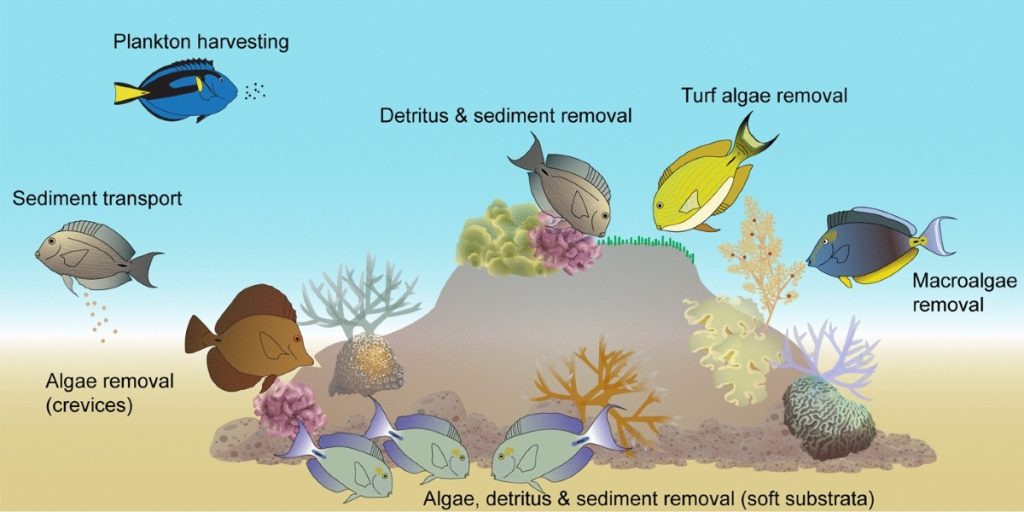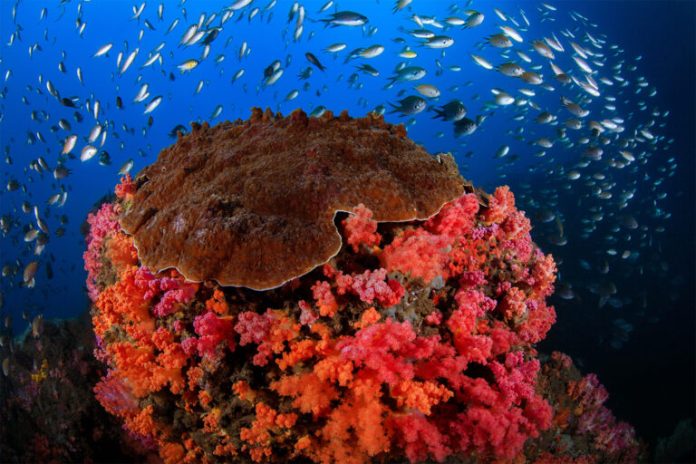Fish populations in the world’s oceans have been in sharp decline over the past fifty years, due largely to overfishing and environmental pressures intensified by climate change. Recognizing the urgency, governments worldwide have designated marine protected areas (MPAs), zones that restrict human activities to conserve marine life. Despite these efforts, the question remains: have MPAs been effective in replenishing fish stocks and supporting healthier marine ecosystems?
A recent study, one of the most comprehensive of its kind, provides valuable insights by examining nearly 2,600 tropical coral reefs across the Pacific, Indian, and Atlantic oceans. Coral reefs, which support a significant portion of marine biodiversity, are especially sensitive to environmental changes and human impacts. This study, focused on understanding how MPAs contribute to fish biomass, revealed that about 10% of the fish present on these reefs—roughly one in every ten kilograms—can be directly attributed to the protections provided by MPAs. While this finding is promising, it also suggests considerable potential for improvement in marine conservation.

Marine protected areas have become an essential tool in global conservation policies, primarily aimed at reversing the decline of ocean biodiversity and supporting fisheries that millions depend on for food and income. MPAs cover diverse marine regions, including coastal waters, lagoons, deep-sea zones, and coral reefs. They come with varying levels of restrictions: some areas permit limited fishing or certain types of gear, while others, known as “no-take zones,” prohibit fishing altogether to ensure maximum protection. Governments frequently report the total area of ocean covered by MPAs as a metric of success, with countries like Australia claiming 48% of their ocean areas are protected. However, the degree of real conservation success varies significantly depending on compliance, protection levels, and local environmental conditions.
To measure the effectiveness of MPAs, the study’s researchers built a computer model that allowed them to estimate the current fish biomass on each reef by analyzing environmental variables, including ocean temperature, habitat type, the intensity of fishing activity (or “fishing pressure”), and the level of compliance with existing MPA rules. The team then simulated various scenarios: a baseline in which all reefs were open to unrestricted fishing, an alternative in which currently unregulated sites faced limited fishing restrictions, and an ambitious scenario where fishing was prohibited across 30% of all reef sites. By comparing these simulations, the researchers gauged the impact of different protection strategies on global fish biomass.

ResearchGate
The study found that current MPAs, along with other fishing restrictions, account for around 10% of the fish biomass on reefs globally. This effect is particularly pronounced in no-take zones, which make up only about 3% of the protected areas but contribute an impressive 20% of the fish biomass attributed to protection efforts. This suggests that expanding and enforcing no-take zones could significantly bolster fish populations.
However, the researchers also noted that any form of fishing restriction, even if less stringent than a full fishing ban, can make a meaningful difference. If all currently unregulated reefs were subject to some level of restriction, such as a ban on destructive fishing gear, global fish biomass could increase by an additional 10.5%. This would effectively double the current conservation impact, matching the results of all existing MPAs worldwide.
Furthermore, the study found that expanding no-take zones to cover 30% of coral reefs globally could increase fish biomass by up to 28%. However, the selection of these zones is crucial; sites surrounded by areas with lower fishing pressure showed a greater boost in fish biomass than those located in regions with intense fishing activity. This is because heavily fished areas often undergo ecological changes, with algae overtaking coral as the dominant feature. Algae-dominated environments are less conducive to fish recovery, so even when fishing pressure is reduced, fish populations struggle to rebound. Therefore, choosing strategic locations for no-take zones could amplify their effectiveness.

This study underscores both the progress and the limitations of global marine conservation efforts. While MPAs have a positive effect on reef fish populations, their overall contribution remains modest given the scale of the challenges facing the world’s oceans. The findings suggest that more ambitious conservation strategies—such as expanding the area under no-take zones and improving enforcement in existing MPAs—are necessary to maximize the ecological benefits.
Beyond ecological gains, bolstering fish populations within MPAs holds substantial socio-economic benefits. Many coastal communities rely on local fisheries for food security and livelihoods. As MPAs help replenish fish stocks, they can support sustainable fishing practices in surrounding areas through a “spillover effect,” where fish populations increase beyond the MPA boundaries. However, for MPAs to fulfill this potential, they must be well-enforced and strategically placed in locations where fish populations are likely to benefit most.
Currently, most nations have committed to a global “30×30” target, which aims to protect 30% of the Earth’s land and marine areas by 2030. If achieved, this goal would nearly quadruple the coverage of MPAs, marking a major step forward in marine conservation. The study’s findings can play a vital role in guiding policymakers toward selecting high-impact locations for these new MPAs, enabling them to provide the most benefit to marine ecosystems and the communities that rely on them.
In conclusion, this study shows that while MPAs have positively influenced fish populations on coral reefs, there remains significant room for improvement. Expanding the area covered by no-take zones, ensuring compliance with restrictions, and carefully selecting MPA sites based on local conditions are all essential steps toward more effective conservation. As governments work to meet ambitious conservation targets, leveraging data-driven strategies will be crucial to maximize the ecological and socio-economic gains from these efforts.




